Making a homemade calendula oil infusion couldn’t be easier. It’s something you’ll want to stock in your medicinal herb cabinet. With countless uses and benefits (and safe for the whole family, even delicate baby skin), this calendula oil recipe can be turned into a healing salve, balm or cream.
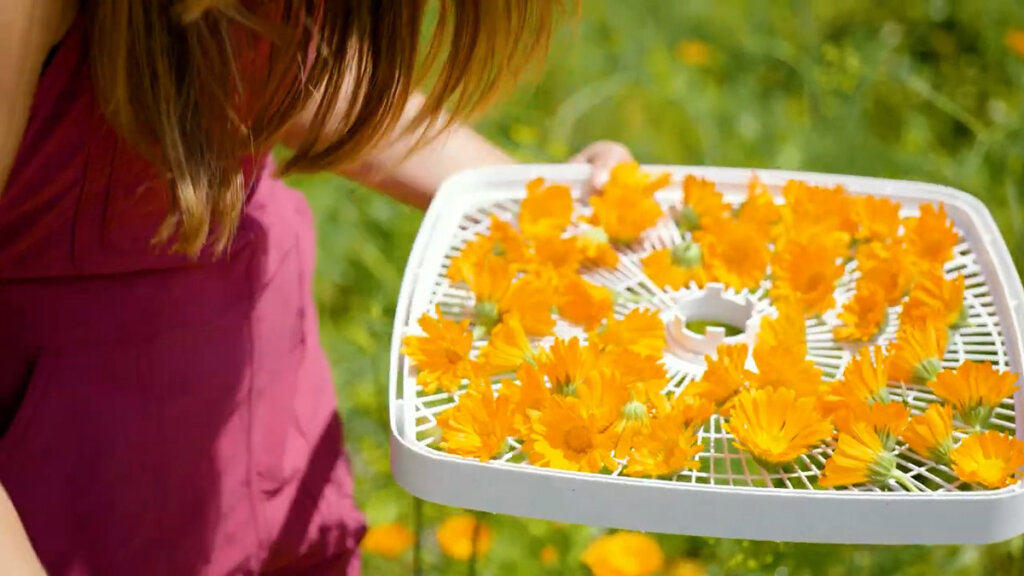
While I love cultivating my medicinal herb garden, I appreciate supplementing my sources by foraging wild edible plants to stock my medicine cabinet with alternative medicine like the pioneers once used.
My favorite way to use calendula flowers is by making an infused oil (much like making garlic infused olive oil for cooking) and then turning that oil into a healing salve. Just like my herbal wound healing salve, my peppermint salve, and my comfrey poultice, calendula salve comes together quickly.
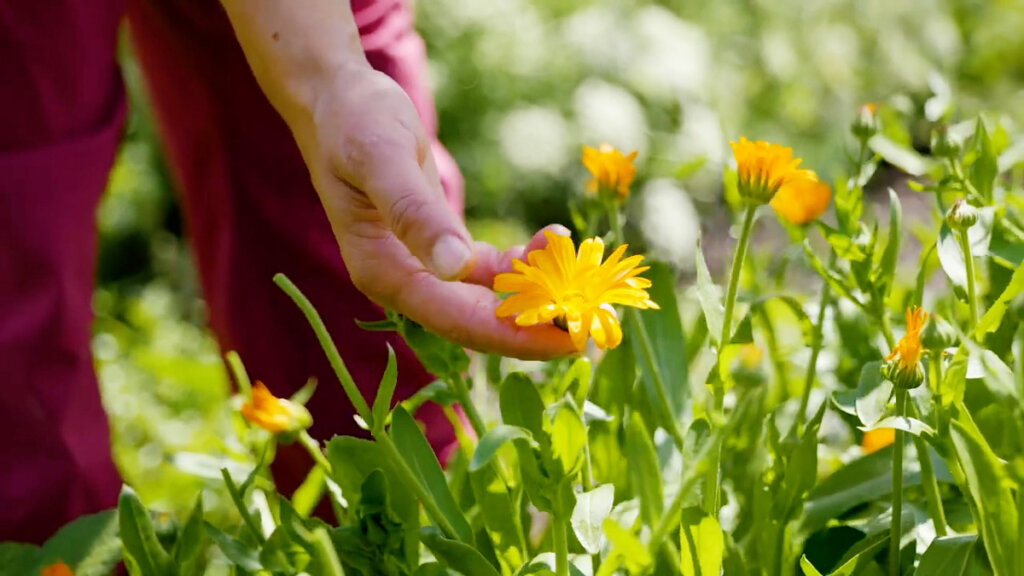
Table of Contents[Hide][Show]
Why I Love This Recipe
One of the things I love most about this recipe is that it uses calendula flowers, which I have boatloads of in my garden. Calendula flowers are a beautiful medicinal herb to grow in the garden.
In fact, calendula will self-seed year after year. I planted it once and have never had to plant it again.
Furthermore, calendula makes a great companion plant as it attracts pollinators to the garden.
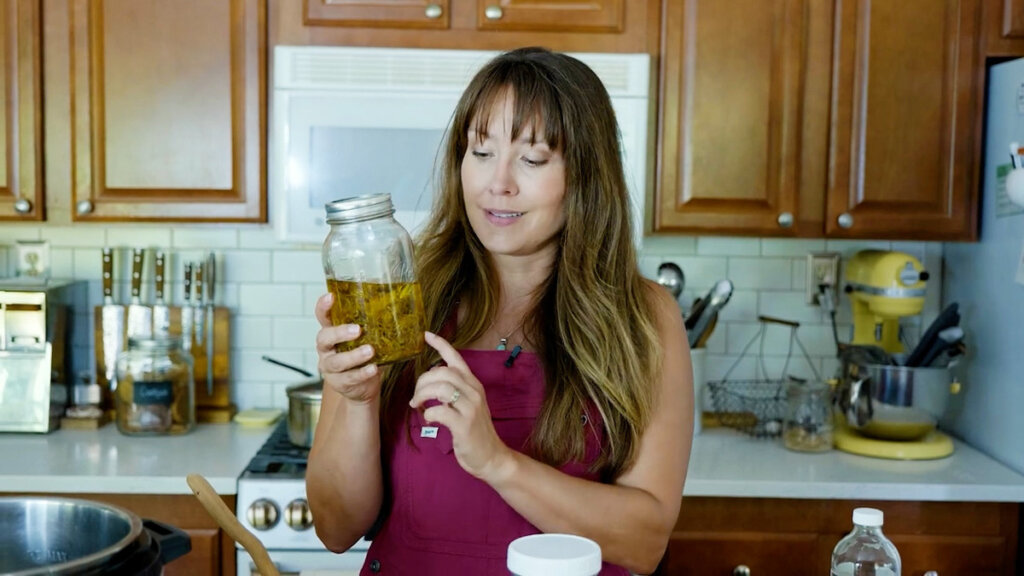
Medicinal Properties of Calendula
Calendula has many benefits and uses. The calendula flower is edible, so you could top your salads with it (if you enjoy the flavor), make tea, tinctures, ointments or washes, or use them to make this herb-infused oil.
Calendula is fantastic for treating burns, bruises, and cuts, as well as the minor infections they cause. Calendula also has been shown to help prevent dermatitis or skin inflammation in people with breast cancer during radiation therapy. (Source)
The petals are also a natural dye and can be used to dye homemade cheeses.
Calendula is in the Asteraceae family, so if you have any allergies to plants in that family, you will want to be careful using calendula.
It’s important to note that I am not a certified medical practitioner. This post is not intended to diagnose or treat but is for informational purposes only. Please contact your healthcare professional before introducing new herbal and natural remedies into your wellness routine.

Subscribe to Melissa K. Norris!
Get updates on the latest posts and more from Melissa K. Norris straight to your inbox.
We use your personal data for interest-based advertising, as outlined in our Privacy Notice.
What is Calendula Oil?
Calendula oil is simply oil that has been steeped with dried calendula flowers. There are two methods for making calendula oil, a quick method and a slower method (more on this below).
No matter which method you’re using, after it’s done you’ll be left with oil that is infused with the medicinal properties of calendula.
This oil can then be used topically or as an ingredient in homemade salves, balms and ointments.
Furthermore, if you choose an edible oil, you can use calendula oil to dress vegetables, use in salad dressings and marinades, or use as a finishing oil.
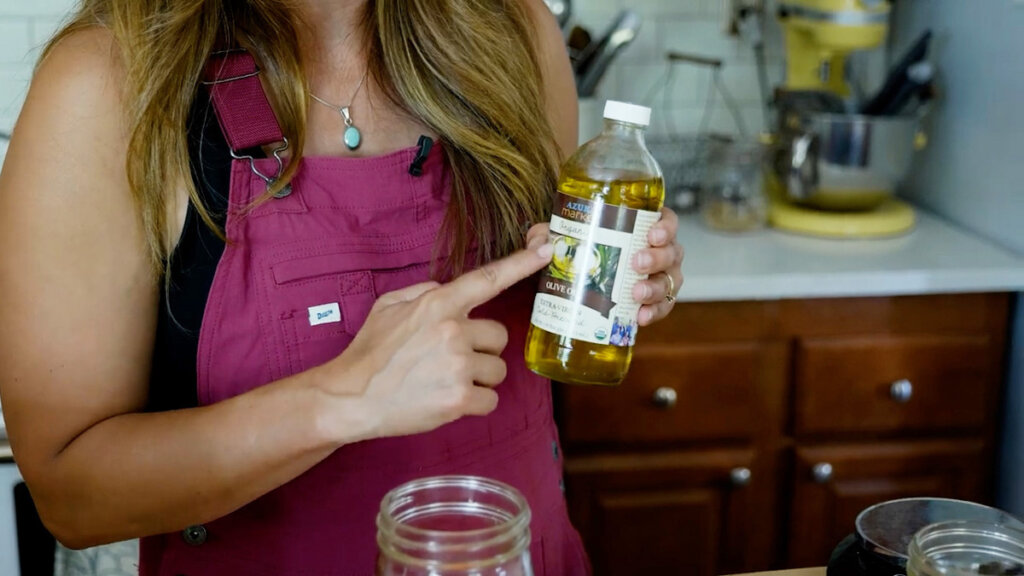
What Type of Oil Can Be Used for Calendula Oil?
Many oils can be used for making calendula oil. The best deciding factor would be to know how you want to use your calendula oil once it’s infused.
Always look for a certified organic, unrefined, cold-pressed oil, when possible. Since the goal is a healing oil to be turned into ointments, salves and balms, the more healing the oil the better.
If you’re looking to use this oil for cosmetic purposes, look for oils on the lower end of the comedogenic scale (which is a scale from 1-5). A lower number is less likely to clog your pores while a higher number will be more moisturizing.
Get creative with your oils, even choosing a blend of oils to suit your preferences.
- Argan Oil (aka Moroccan oil) – Gentle and very moisturizing. Rated 0 on the comedogenic scale. Good for reducing fine lines and excess oil production, softening skin and treating stretch marks or sun damage. (Source)
- Avocado Oil – Great for deep moisture or for use in culinary purposes. Avocado oil rates a 3 on the comedogenic scale. It’s good for reducing the appearance of scars and reducing inflammation. (Source)
- Coconut Oil – If I had a dollar for every use of coconut oil I’d be a rich woman! One of the benefits of coconut oil is that it becomes solid below 76 degrees F, which makes it ideal if turning your calendula oil into a salve or balm. Coconut oil is a 4 on the comedogenic scale. It contains caprylic acid (among other compounds) that makes it antibacterial, antiviral, antifungal, and anti-inflammatory. (Source) Coconut oil is also edible, making it suitable for culinary purposes. If you’re looking for an oil that stays liquid at room temperature, you’ll need to purchase fractionated coconut oil.
- Extra Virgin Olive Oil (EVOO) – Another great option if you’d like to use calendula oil for culinary purposes. EVOO comes in at a 2 on the comedogenic scale and is very hydrating for dry skin. (Source) This is the oil I generally reach for when making calendula oil. I purchase my olive oil from Azure Standard. They’re the sponsor of this post and have offered first-time customers 10% off their first order of $50 or more with coupon code “Melissa10”.
- Grapeseed Oil – One of the lowest on the comedogenic scale at a 1, grapeseed oil is fantastic for acne-prone skin. It’s lightweight, non-greasy and easily absorbable. (Source) Though not as nourishing as some of the other thicker oils, it’s a great option for many. Grapeseed oil is also edible at cold or room temperature, but don’t use it in high-heat cooking.
- Hemp Seed Oil – Another great oil that’s low on the comedogenic scale. Coming in at a 0, it’s one of the lightest and dryest oils out there. Hemp oil can help reduce inflammation as well as being a superior acne treatment. (Source) This is another edible oil so it will pack a multi-purpose punch!
- Jojoba Oil – Jojoba oil is semi-lightweight and comes in at a 2 on the comedogenic scale. If you’ve ever heard of oil-cleansing, jojoba oil is a great option because it breaks down excess sebum on our skin. It’s fantastic at unclogging pores, removing impurities, and has anti-inflammatory properties. (Source)
- Safflower Oil – Another oil that comes in at a 0 on the comedogenic scale. Safflower oil is a great choice for those with dry or oily (and acne-prone) skin. It’s very gentle and lightweight while also moisturizing and anti-aging. (Source) If you have any allergies to the ragweed family, you should avoid safflower oil.
- Sunflower Seed Oil – Very similar to safflower oil, you do have the option of a high, moderate or low oleic acid content. This will change the comedogenic number. Sunflower seed oil is an edible option and contains high levels of Vitamin E, making it a great option for repairing skin damage. (Source) (Source)
- Sweet Almond Oil – Listed as a 2 on the comedogenic scale, sweet almond oil is a great moisturizer for those with dry or sensitive skin (a great choice for babies). (Source) Another oil that’s edible and best consumed when raw.
- Rosehip Seed Oil – Coming in at a 2 on the comedogenic scale, rosehip seed oil is high in essential fatty acids, Vitamin E and Vitamin A. (Source) It can help speed up healing, and reduce the signs of fine lines/aging. (Source) It’s important to note that rosehip seed oil does have a pretty short shelf-life (6 months), so you’ll want to keep that in mind when making your calendula oil.
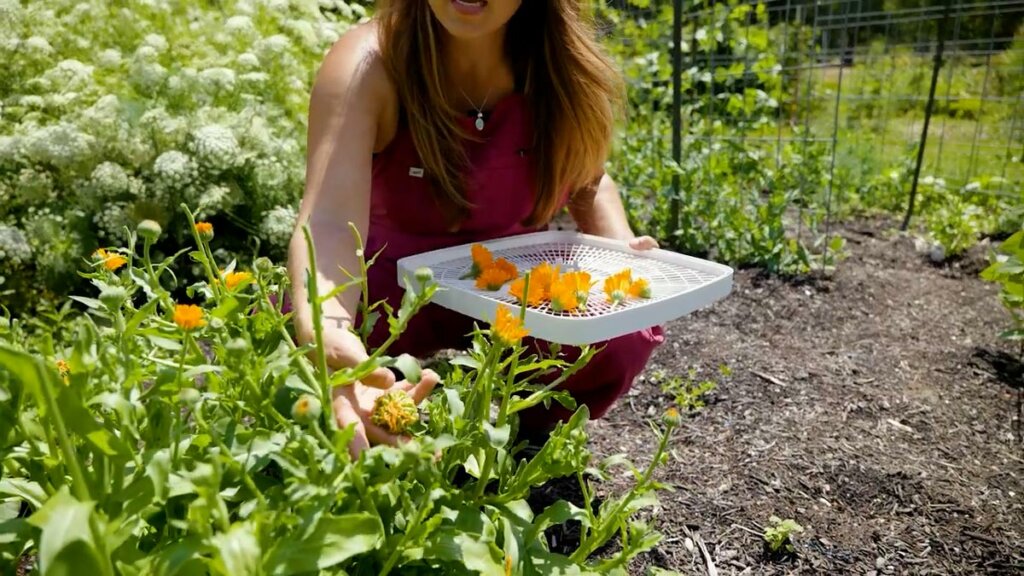


When to Harvest Calendula
You want to harvest calendula at a very specific time. If you harvest too early or too late, the medicinal properties will be pretty low, and you won’t get all the benefits.
The ideal time for harvesting calendula is right when the flower has opened completely. The petals should actually feel a bit tacky or sticky to the touch.
For buds that haven’t yet opened, leave them on the plant until they open. And for flowers that have gone past the peak time to harvest (see image above), leave those on the stem to go to seed and come back next year.
Remember, calendula is an annual herb. Though they self-seed extremely well, you will have to leave some of the flowers on the stem for the seeds for the following year.

How to Harvest Calendula
Harvesting calendula couldn’t be easier. It is important to note that if you want to use calendula for its medicinal properties, use the bright orange or yellow flowers.
Calendula comes in a variety of beautiful colors, and the variety makes for a beautiful garden space. However, for medicinal purposes, we want the orange or yellow flowers.
To harvest calendula, simply take your fingernail or tiny sheers, and pinch or snip just below the flower head. The medicinal properties we’re after are in the flower, so you don’t need any of the stems.
I like to bring my dehydrator trays out to the garden with me. That way, I can visually see when I have harvested enough flowers to run a batch in the dehydrator.
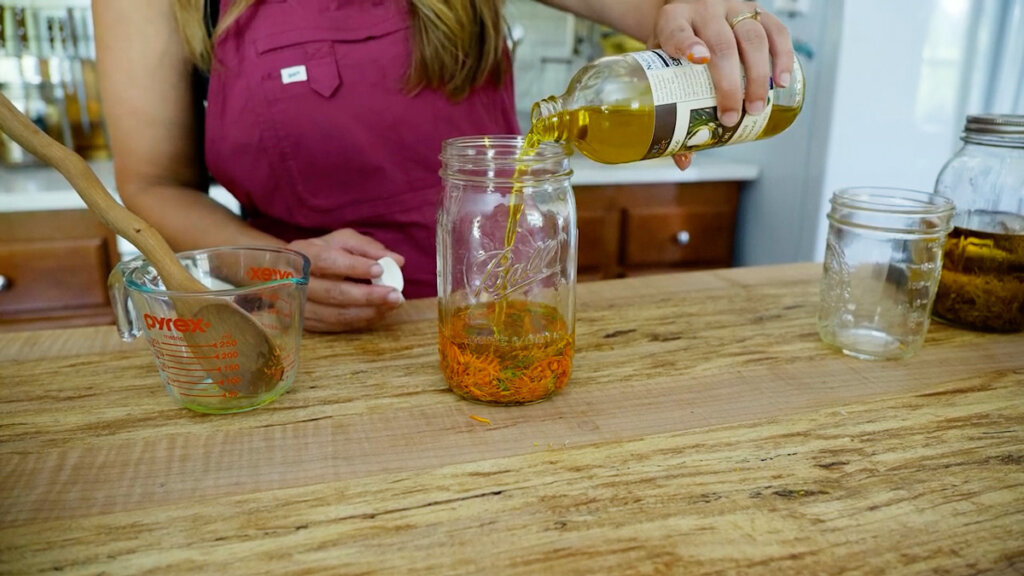
How to Make Calendula Oil (2 Ways)
There are two ways to make calendula oil at home. One method is ready in about 24 hours, while the other method will take about six weeks.
Both methods allow your dried calendula flowers to steep in oil until the medicinal properties are extracted into the oil.
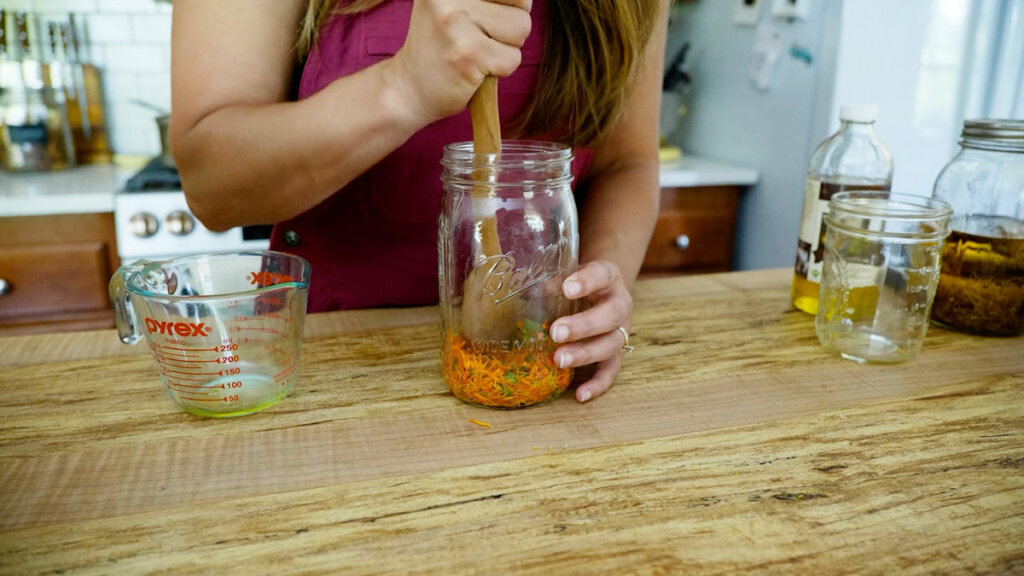
Old-Fashioned Method
Supplies Needed
- Dehydrator – It’s important that your calendula flowers are completely dry before making infused oil. The reason is any moisture left in the flowers could cause mold and ruin your whole batch. You can let your flowers air dry, but if you’re in a hurry, simply use a dehydrator at the lowest temperature possible. It should take around 12-15 hours.
- Mason Jar + Lid – When choosing your Mason jar, be sure it’s large enough to allow for some head space as the oil will expand as the calendula petals soak up the oil. For about one cup of dried calendula flowers, I like to use a quart-size wide-mouth Mason jar. Using a wide-mouth jar helps get your spoon into the jar.
- Wooden Spoon – This will help to mash the dried petals into the Mason jar to reduce air space. The goal is to use as little oil as possible to cover the petals completely. So the more mashed they are into the jar, the better.
- Crock Pot or Instant Pot – Necessary for the quick method, not if you’re using the old-fashioned method.

Ingredients Needed
- Dried Calendula Flowers – It is important to note that if you want to use calendula for its medicinal properties, use the bright orange flowers.
- Oil of Choice – See the list of oils above to choose which will be best for your needs. I like to use cold-pressed, organic extra virgin olive oil.

Step-by-Step Directions
- Harvest calendula flowers and arrange them on dehydrator trays.
- Dehydrate calendula at the lowest possible temperature of your dehydrator.
- Place dried flowers into a wide-mouth Mason jar (be sure your jar is large enough to allow for expansion).
- Using a wooden spoon or a kraut pounder, gently tamp down the flowers in the jar.
- Pour your oil of choice over the top of the flowers and cover the flowers until the oil is about one inch above the flowers.
- Add the lid to the jar, mark with the date and place it on a shelf, out of direct sunlight, to steep for about six weeks. Shake the jar periodically to redistribute the flowers throughout the oil.
- After six weeks, strain out the solids and store your oil in an air-tight jar. Be sure to label and date your jar!
Did you make this recipe? If so, please leave a star rating in the recipe card below. Then, snap a photo of your calendula oil and tag me on social media @melissaknorris so I can see!
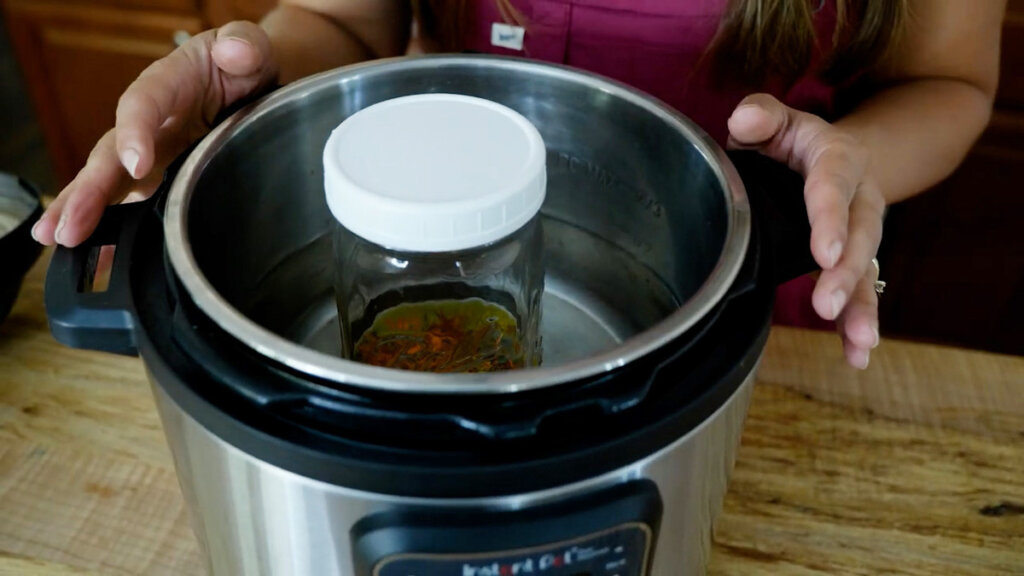
Quick Method
To use the quick method, follow the same steps as the old-fashioned method above. However, instead of letting the oil steep for six weeks, we use low heat to infuse the oil more quickly.
- Using an instant pot or slow cooker, place the jar of oil into the pot.
- Add warm water to the pot until it reaches the same height as the oil in your jar.
- Turn the heat to low and let steep for 24 hours.
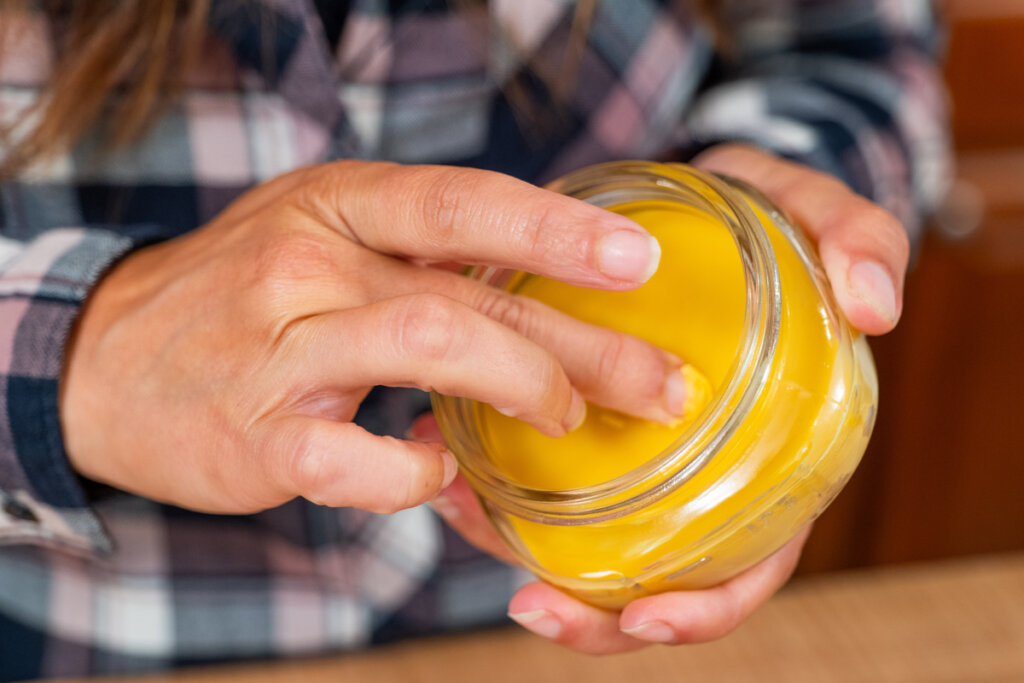
Uses for Calendula Oil
As mentioned above, calendula has many great medicinal benefits and uses. Here are a few ways to use calendula oil:
- Use the oil to make salad dressing or a marinade.
- Use the oil to make a healing wound salve, or use it on your skin to treat burns, bruises, and cuts, as well as the minor infections they cause.
- Use to help prevent or heal dermatitis or skin inflammation.

Summer Herb Course
It’s not too late to join my mini herb course (2023). If you want a solid foundation for treating yourself and your family with herbs, sign up for this free course.
This mini-series is just a taste of what we’ll dive into during my Herb Webinar (launching in September 2023). Make sure to reserve your spot on the waitlist today!

Other Articles You May Enjoy
- Herbal Would Healing Salve
- Peppermint Salve
- Comfrey Poultice
- Pressing Your Own Seed & Nut Oils at Home
- Benefits of Rosehips (Harvesting & Medicinal Uses)
- How to Use Herbs and Natural Remedies at Home
- 5 Rules for Foraging for Wild Edibles
- Cottage Garden
- Alternative Medicine (& What to Do if Your Medicine Isn’t Available)
- Medicinal Herb Garden (Planning & Growing)
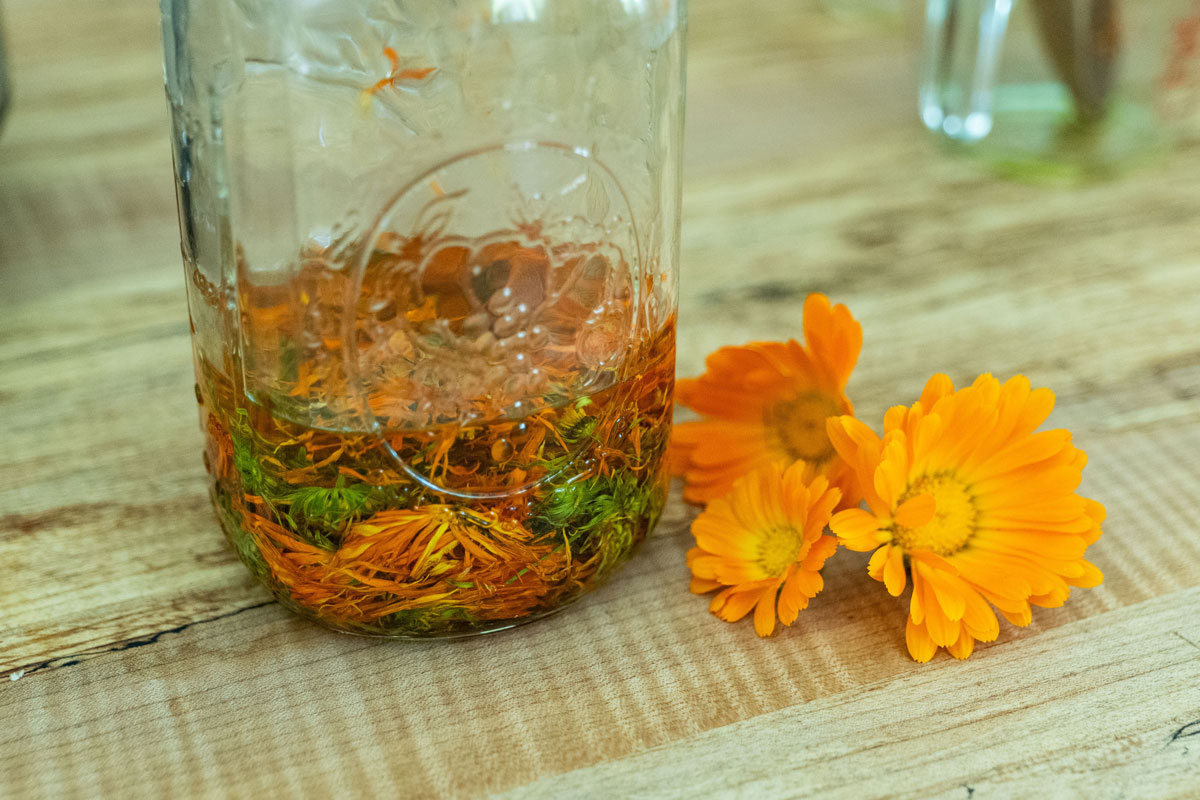

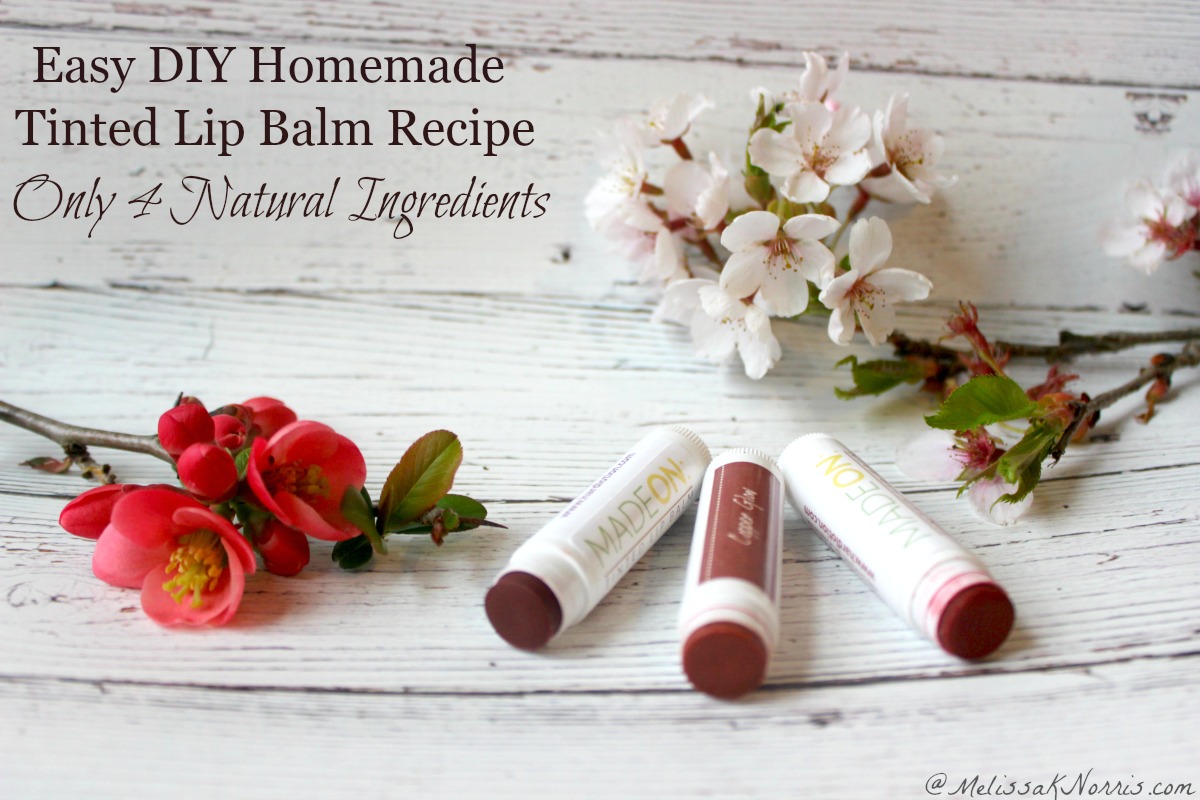

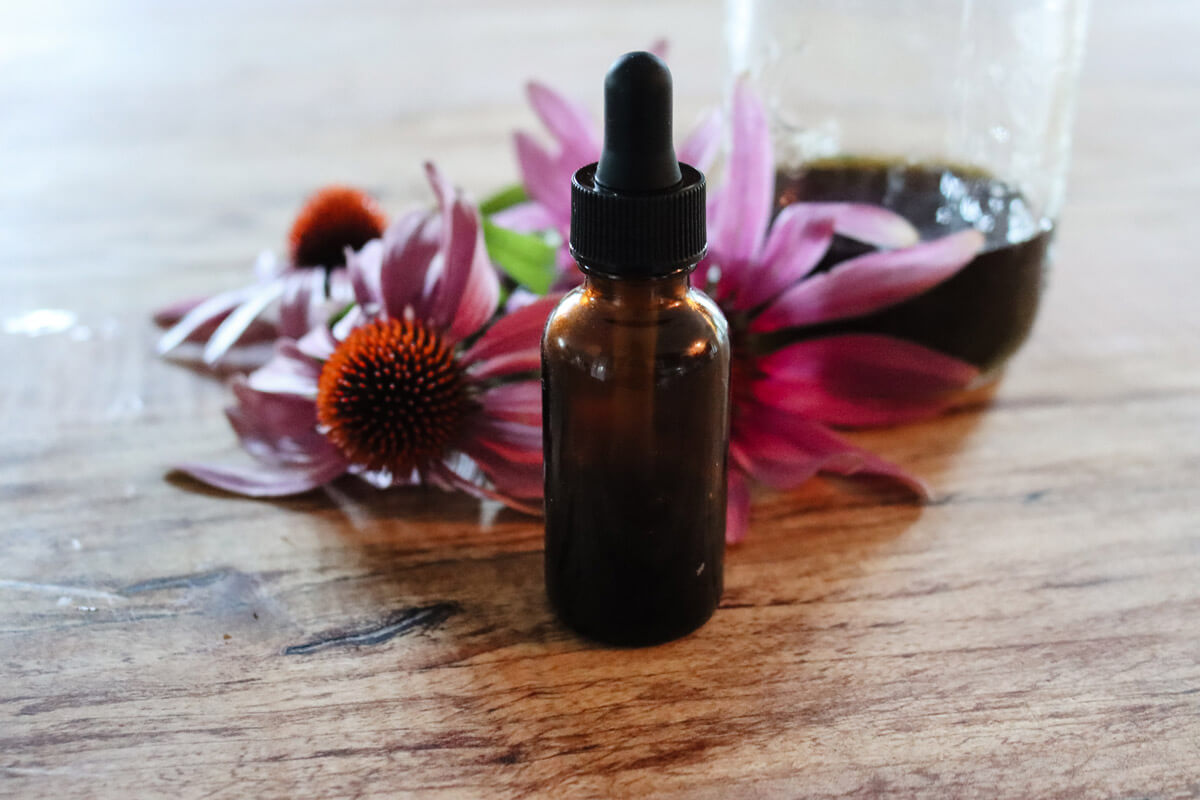






Do you use a 1:4 ratio for making the oil?
I’ve been making salves and such for 30 years and I like the way you make the instructions easy and to the point. I have to say though, I was taught to pull the petals off of the flower and not to use the green part they are connected to. May I ask your thought on that? I’ve noticed other modern herbalists do the same thing. Very interested in your answer!
The green part contains a large part of the medicinal benefits, it’s not just in the petals, this increases the potency.
Simple and straightforward. The info about specific oils & comedogenicity is very helpful. I’ve been making calendula oil for years and I learned something new! Thanks
I make a salve with calendula, comfrey and chamomile and we use it on everything from shallow cuts to minor burns and it is wonderful! I keep reading about pomegranate seed oil for skin, hair and nails, I wonder where it would score on this list? I’m definitely saving the whole list for future reference.
Thank you for this recipe! How long will the calendula infused oil last? I am storing mine in a canning jar in the cupboard.
I’ve been using some I made over 2 years ago.
Hello,
Do you plant annual or perennial or annual calendula? Where do you purchase your seeds from?
I bought seeds from https://www.rareseeds.com/.
My Calendula self seeded (everywhere!) after planting the first year. It even lived through a cold winter in the greenhouse, so it seems pretty hardy. You can find seeds just about anywhere, but amazon does have them.